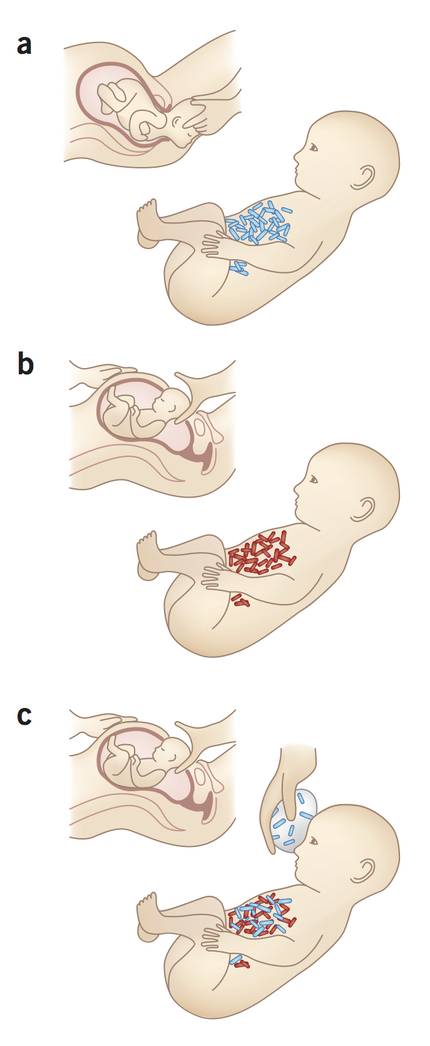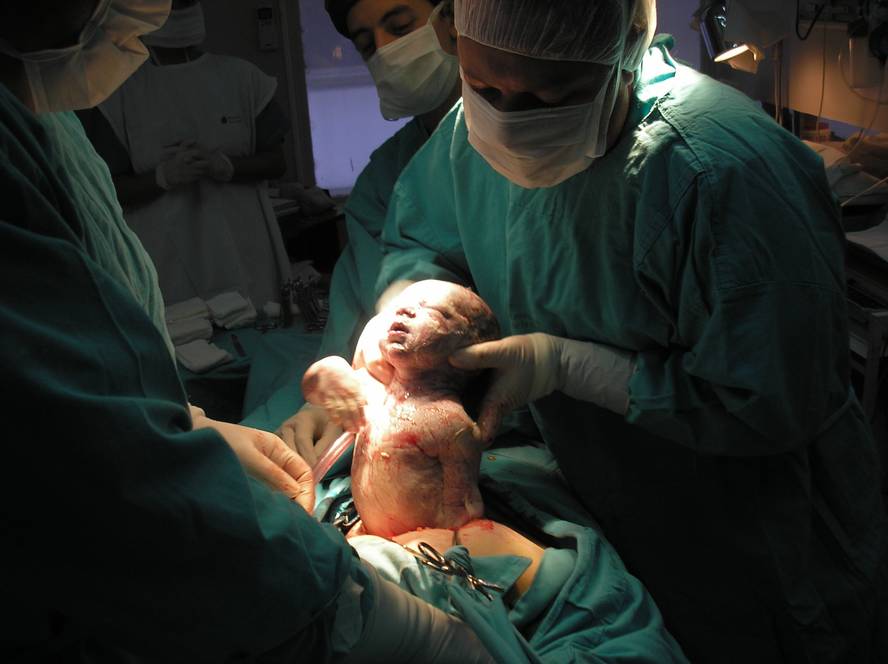Partially recover the microbiota of children born with caesarean section
The relationship of newborns with the vaginal secretions of their mother is interrupted at birth by caesarean section. Consequently, they do not develop the typical microbiot of newborns. Given the importance of initial bacterial communities in the development of the immune system and the digestion of the child, researchers have sought a way to influence it. According to the study published last week in the journal Nature Medicine, they have achieved a partial recovery of this microbiota: cleaning the child with vaginal bacteria from his mother at the end of the caesarean section.

Until birth, children develop in a medium without bacteria. The first contact with bacteria occurs when they pass through the mother's vaginal canal. At that time they bathe in vaginal bacteria: they stick on the skin, they are introduced by the mouth... In this way, vaginal bacteria colonize the skin, the oral cavity and the intestines of the child, becoming in some way the first seed of the microbe of the child, which affects directly the development of the immune system and the digestion of the child.
However, those born by C-section do not have contact with the vaginal fluids of their mother, which is reflected in the intestinal flora. There are hardly any genera Bacteroides and Lactobacillus common in children born from the vagina. The development of a different microbiota may be, according to the researchers, at the base of metabolic and immunological diseases that later develop some children born by C-section.
In view of this, gases have been placed in the mother's vagina and children born by caesarean section have been cleansed with these gases at birth. They have passed through the face, the mouth, and the whole body. The results have shown that babies have achieved a microbiot similar to that of children born on the normal route one month after their birth.
The researchers have recognized that the transfer of vaginal bacteria has not been total and that it is necessary to fine-tune the method, but have made clear the importance of children coming into contact with these bacteria after a cesarean section. Vaginal bacteria have a fundamental role in women: protection against infections. But, according to researchers, vaginal bacteria have a second task as important as the first: to help develop the posterior microbiota of their children.
Therefore, the type of childbirth conditions the bacterial profile of the children. However, they have recognized that it is not the only factor. According to the researchers, the most common factors that alter the natural development of the neonatal microbiome are caesarean areas, antibiotics adopted during pregnancy and the ingestion of formula milk instead of the maternal breast.






